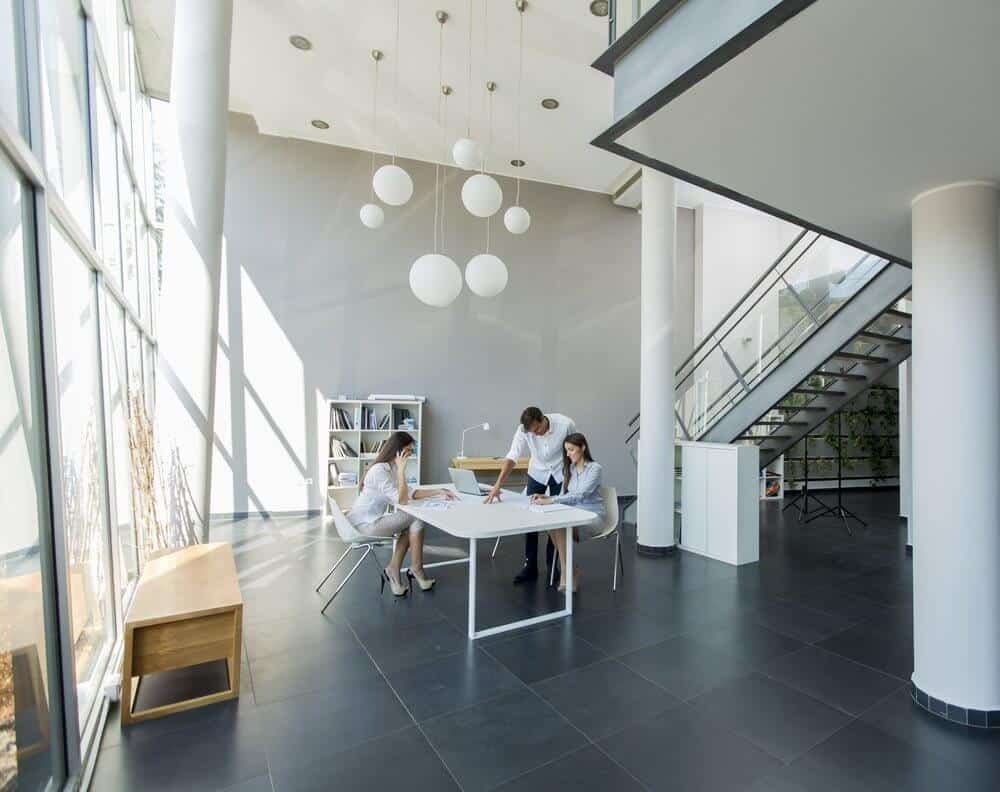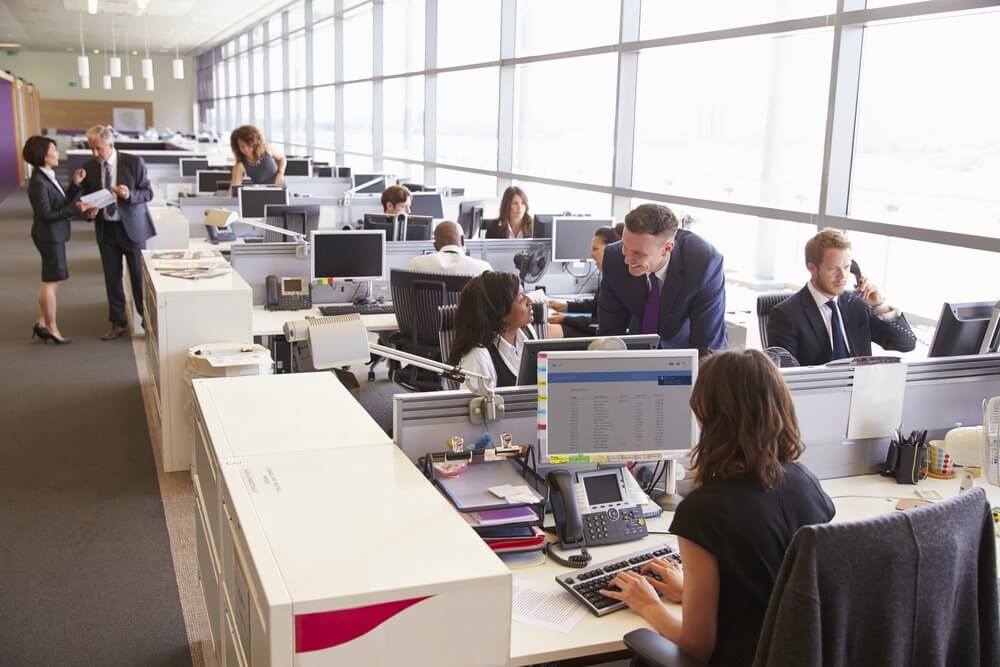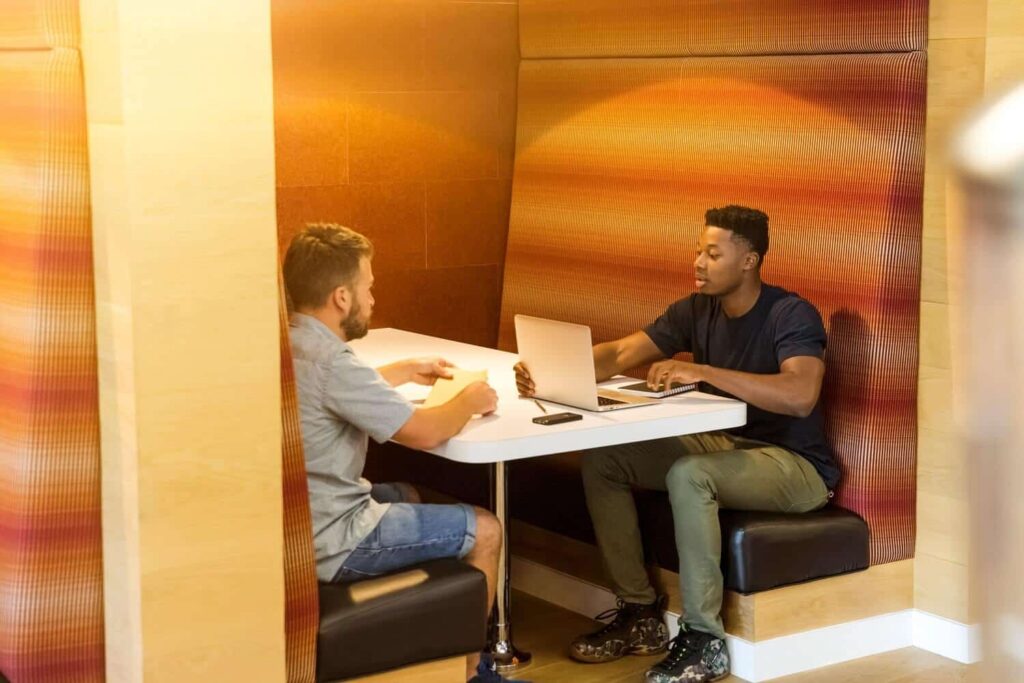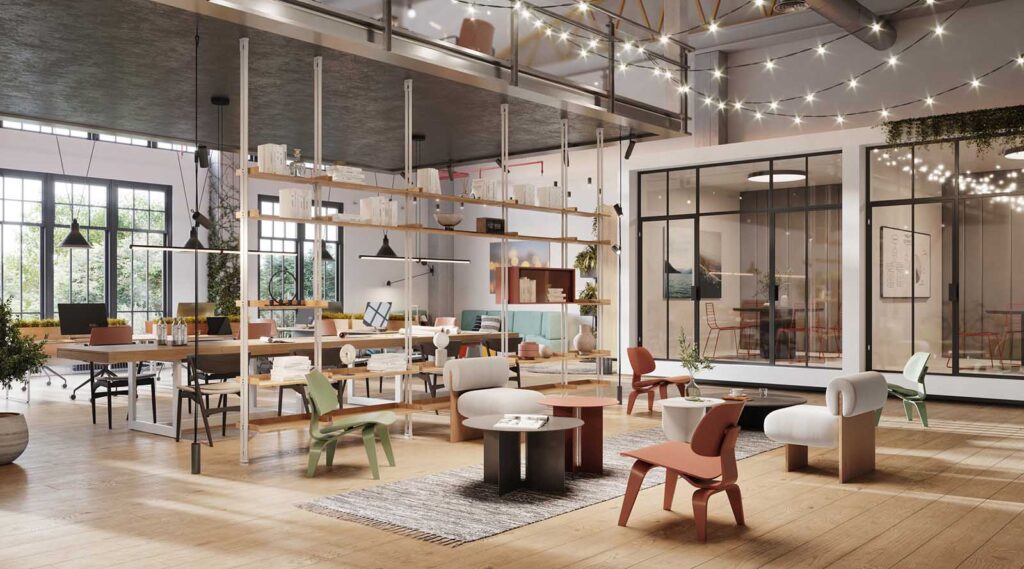
An office’s corporate culture is often reflected in its layout. A poorly designed office can lead to decreased morale, productivity and a negative office environment, while a good layout can lead to better internal communications and greater employee satisfaction.
Office designs can be used to reflect the values at the core of a company. For example, open spatial configurations and layouts promote a culture of transparency and collaboration, while offices where executives have corner offices may reflect a more hierarchical organization or necessary privacy. When designing your office, it is important to keep in mind the relationship between how a space is used and the overall philosophy or vision of your company.

Major tech companies have increasingly been designing their headquarters to reflect their core values. Etsy, the popular e-commerce marketplace for individuals who create handmade clothing, art, jewelry and more, is a prime example of a business that uses its headquarters to reflect its conscious corporate culture. With values based on community-building, diversity and creativity, the company’s HQ reflects its socially-conscious attitude down to the very materials it used to build the space. The office is built in accordance with the Living Building Challenge, a green certification with strict rules around energy efficiency and material composition.
The new headquarters are furnished primarily with handmade or “micro-manufactured” furniture made by Etsy sellers and other local artisans.
In Etsy’s words, the office was designed to “inspire employees and physically connect them to the marketplace [they] build and nurture every day.” By foregrounding how they hope their space will reflect on and inform office use, Etsy is able to steer the professional values of their workplace and remind their employees of the culture they hope to maintain.
DropBox, the technology company that allows for file storage and sharing on the go, similarly uses their office to reflect their goals and values. Their 300,000 square-foot head office in San Francisco was recently re-designed to reflect the practicality and functionality of their product. Much as the DropBox technology encourages collaboration, the office is filled with shared workspaces for breakout meetings, brainstormings and teamwork. The office is also split into distinct “districts” inspired by a city layout, where departments can create their own vibes and subcultures. This evolving space reflects both DropBox’s simplicity and ease-of-use, as well as its concepts around collaboration, efficiency and the endless possibilities of storage and space.
Etsy and Dropbox are just two of many offices whose physical layouts reflect their corporate mission. More and more companies are realizing that they can foreground their leading values through design.
If you’re redesigning or moving office spaces, here are some things to keep in mind:

When designing your own office, it’s important to examine how the choices you make send a message to your team. Some things to consider when moving offices or designing a space:
- Would your office benefit from an open floor plan, or from distinct offices and private wings? For example, in a law practice, it makes sense for partners’ offices to be closed off so that clients can be more comfortable speaking about personal manners. This layout can reflect the professionalism and privacy at the core of a business.
- What level of interaction do your employees have with each other? Do associates need to be communicating often, or training other employees and interns? If employees are often collaborating on projects, open desk plans can encourage teamwork and facilitate easier conversations.
- Does your office need communal workspaces? Do different departments need to meet often for break out sessions? Establishing flex spaces and conference rooms where different teams can meet and throw around ideas is a good way to promote brainstorming sessions.
- It’s important to consider the specific values of your company. Is your office based on transparency? Do you have environmental goals, such as receiving your B Corp certification? Do you support local businesses and artists? Features like glass walls, plants, green space or a rotation of paintings by local artists can encourage certain values and remind employees and clients of the company’s priorities.
While every company will have slightly different guiding values and goals, their office space should work to make their professional expectations and visions clear. Intentionally designing an office layout to reflect and contribute to office culture can help companies share their values with the entire team and lead to a more unified workplace overall.
Photos: Shutterstock / rawpixel , Shutterstock / Goran Bogicevic, Shutterstock / Monkey Business Images




